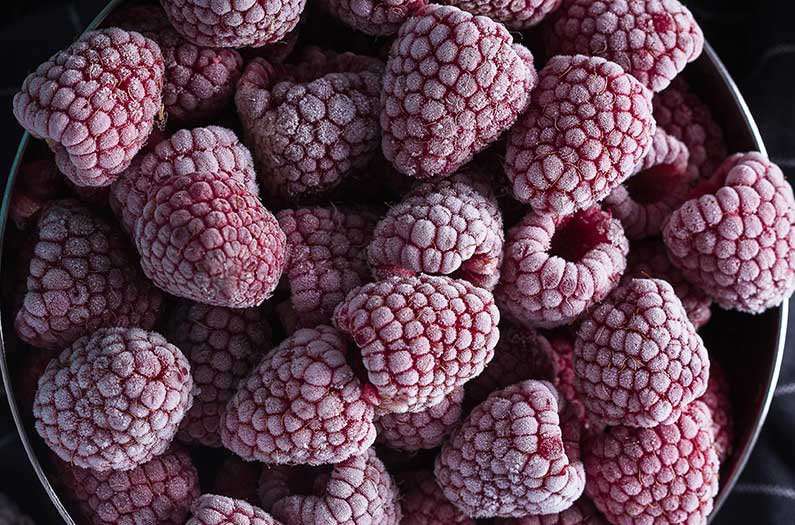Frozen foods are a modern convenience that, for most people, is difficult to imagine living without. Freezing is a relatively cost-effective way to preserve nutrients and taste, but it also comes with a big energy and carbon emissions price tag.
Efforts to reduce this energy cost have typically focused on the refrigeration devices that are used to store the food. Researchers now propose a fundamentally new way to freeze foods that could cut global energy consumption by as much as 6.5 billion kilowatt-hours a year.
The resulting carbon emission reduction of 4.59 billion kg is akin to removing about one million cars from the road. And these savings could be achieved quickly and inexpensively, “without requiring any significant changes in current frozen food manufacturing equipment and infrastructure,” said Cristina Bilbao-Sainz, a research food technologist with the U.S. Department of Agriculture.
As an added bonus, the technique substantially improves food quality and can preserve fresh and otherwise delicate food products for longer than conventional freezing methods.
The method that Bilbao-Sainz, mechanical engineer Boris Rubinsky at the University of California, Berkeley and their colleagues report in the journal Renewable and Sustainable Energy Reviews, is based on a strategy that Rubinsky’s team devised for transporting organs for transplant patients.
Called isochoric freezing, the technique relies on storing foods in a sealed, rigid container made of hard plastic or metal that is filled with a liquid such as water, and placing it in a freezer. Conventional freezing involves exposing food to the air and freezing it solid at sub-zero temperatures, the new method does not turn food into solid ice.
Instead, only about 10% of the volume of water in the container is frozen, and the pressure inside the chamber keeps the ice from continually expanding. “Energy savings come from not having to freeze foods completely solid, which uses a huge amount of energy,” Bilbao-Sainz said.
As long as the food items remain in the liquid portion, they are safe from ice crystallization. Which means things like tomatoes and berries wouldn’t turn to mush, and could also be preserved with this method.
The researchers are now scaling up the technology to industrial level, and hope to commercialize it with the help of partners.
Source: Yuanheng Zhao et al. Analysis of global energy savings in the frozen food industry made possible by transitioning from conventional isobaric freezing to isochoric freezing. Renew Sust Energy Rev, 2021.
Image by Дарья Яковлева from Pixabay

CrispyNipsy on September 15th, 2021 at 15:08 UTC »
So you fill up the containers with water, that then also has to be transported to supermarkets etc. This seems like a very big overhead of the mass that needs to be trabønsported transported around
Initial_E on September 15th, 2021 at 14:58 UTC »
Feels like there is a specific temperature range that you cannot exceed either above or below
WastedPostConsumer on September 15th, 2021 at 14:52 UTC »
Good potential, but incomplete analysis. The authors do not address the costs associated with volume efficiency of rigid vs. flexible packaging or transportation of the added water. Both would likely be significant.